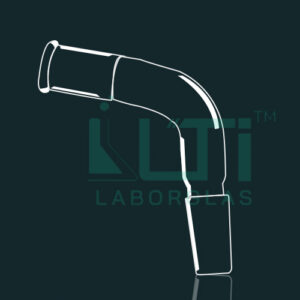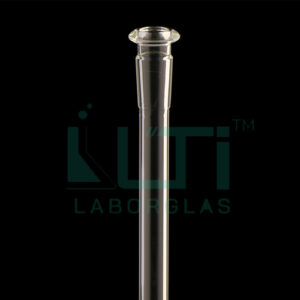- Made from ASTM E-438 Type 1, Boro 3.3 heat resistance glass
- Complies with DIN 12394 & USP standard
- Has Two Neck Parallel
| PART No. | Capacity (ml) | Socket Size | Side Socket | Overall Height | PACK Qty. |
| 5620-50 | 50 | 24/29 | 14/23 | 90 | 1 |
| 5620-50-A | 50 | 29/32 | 14/23 | 90 | 1 |
| 5620-100 | 100 | 24/29 | 14/23 | 105 | 1 |
| 5620-100-A | 100 | 24/29 | 19/26 | 105 | 1 |
| 5620-100-B | 100 | 29/32 | 14/23 | 105 | 1 |
| 5620-250 | 250 | 24/29 | 14/23 | 140 | 1 |
| 5620-250-A | 250 | 24/29 | 19/26 | 140 | 1 |
| 5620-250-B | 250 | 29/32 | 14/23 | 140 | 1 |
| 5620-500 | 500 | 24/29 | 14/23 | 163 | 1 |
| 5620-500-A | 500 | 24/29 | 19/26 | 163 | 1 |
| 5620-500-B | 500 | 29/32 | 14/23 | 163 | 1 |
| 5620-1000 | 1000 | 24/29 | 14/23 | 200 | 1 |
| 5620-1000-A | 1000 | 24/29 | 19/26 | 200 | 1 |
| 5620-1000-B | 1000 | 29/32 | 14/23 | 200 | 1 |
| 5620-2000 | 2000 | 24/29 | 19/26 | 240 | 1 |
| 5620-2000-A | 2000 | 34/35 | 19/26 | 240 | 1 |
| 5620-3000 | 3000 | 34/35 | 19/26 | 260 | 1 |
| 5620-3000-A | 3000 | 34/35 | 24/29 | 260 | 1 |
| 5620-5000 | 5000 | 34/35 | 19/26 | 305 | 1 |
| 5620-5000-A | 5000 | 34/35 | 24/29 | 305 | 1 |
| 5620-10000 | 10000 | 34/35 | 24/29 | 380 | 1 |
| 5620-10000-A | 10000 | 55/44 | 24/29 | 380 | 1 |
| 5620-20000 | 20000 | 55/44 | 24/29 | 435 | 1 |
Here are some common uses for a 2-Neck Parallel Round Bottom Flask in a laboratory setting:
- Parallel Reactions: Conducting two separate reactions simultaneously within the same flask, allowing for efficiency in experimental setups and resource utilization.
- Comparative Studies: Enabling researchers to perform comparative studies by running identical or similar reactions under the same conditions, except for one or more variable components.
- Multiple Sampling: Facilitating the sampling of reaction mixtures from both necks for analysis or monitoring purposes during the course of the experiment.
- Simultaneous Distillation: Conducting parallel distillation processes, where different components of mixtures can be distilled concurrently through each neck.
- Refluxing in Parallel: Allowing for parallel reflux setups, where different reactants can be refluxed simultaneously, either for comparative studies or to synthesize multiple compounds.
- Temperature Gradient Studies: Creating temperature gradients within the same flask by subjecting different reactants to distinct temperature conditions, providing insights into temperature-dependent reactions.
- Sequential Reactions: Designing experimental setups where one reaction follows another sequentially within the same flask, facilitating multi-step synthesis or reactions.
- Isolation of Reaction Intermediates: Separating reaction intermediates or products by utilizing one neck for the collection of one component while continuing the reaction in the other neck.
- Gas Evolution Studies: Investigating gas evolution during reactions by allowing gases to escape through one neck while monitoring the reaction progress through the other.
- Catalyst Studies: Examining the effects of different catalysts on reactions by conducting parallel reactions with varied catalysts in each neck.





